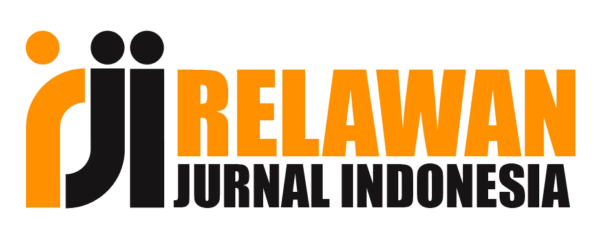Comparative study of problem solving skill development features in Japanese and Indonesian high school physics textbooks
Abstract
Despite both Japan and Indonesia incorporating critical thinking skill development into their educational curricula, Japanese students exhibit higher problem-solving abilities. To investigate the role of physics textbooks in nurturing problem-solving skills, a comparative and content analysis method was employed, focusing on two textbooks: The Basic Physics High School Textbook for Science by Sukenshuppan (JP-SKN) and Fisika 1 untuk Jurusan IPA by Tiga Serangkai (ID-TS). Foshay's teaching principles for problem-solving skills served as the analytical framework, consisting of 12 key points to identify problem-solving teaching features within the textbooks. Explicitly stated sub-chapters and consistently recurring implicit elements within each chapter were recognized as book features. The analysis revealed that JP-SKN encompasses a greater variety of problem-solving skill development features compared to ID-TS. While the quality of these features may differ, JP-SKN contains 16 book features aligned with problem-solving teaching principles, surpassing the 12 found in ID-TS. JP-SKN employs diverse approaches to foster problem-solving skills, including case studies, graphs, tables, illustrations, and interactive digital content. Its "Thinking Learning" feature (思考学習) encapsulates numerous problem-solving principles, providing instructions, structured problems, and encouraging the formulation of mental models for problem resolution. Conversely, ID-TS incorporates additional elements beyond problem-solving, such as promoting teamwork, scientific attitude, and offering numerous practice questions. These findings offer valuable insights and references for the development of learning resources that aim to promote critical thinking skills within Indonesia's new curriculum. Furthermore, they serve as a starting point for future research to explore how both countries interpret their respective curriculum mandates when designing representative textbooks, particularly concerning high school Physics subjects.
Keywords
Full Text:
PDF (BAHASA INDONESIA)References
Adisendjaja, Y. H. (2009). Analisis Buku Ajar Biologi SMA Kelas X di Kota Bandung Berdasarkan Literasi Sains. Jurusan Pendidikan Biologi, Fakultas MIPA UPI, Bandung: Unpublished.
Cuban, L., & Jandrić, P. (2015). The dubious promise of educational technologies: Historical patterns and future challenges. E-learning and Digital Media, 12(3-4), 425-439.
Darmaji, D., Astalini, A., Kurniawan, D., Parasdila, H., Irdianti, I., Susbiyanto, S., Kuswanto, K., & Ikhlas, M. (2019). E-module based problem-solving in basic physics practicum for science process skills. International Journal of Online and Biomedical Engineering, 15 (15), 4-17.
Fukuda M. (2017). Spontaneous Use of Mathematics Textbooks and Reference Books in Stumbling Situations in Home Study: Focusing on Textbook Views and Teachers' Use of Textbooks. The Japanese Journal of Educational Psychology, 65(3), 346-360.
Foshay, R. & Kirkley, J. (1998). Principles for teaching problem-solving. PLATO Learning Inc., 4(1), 1-16.
Kementerian Pendidikan dan Kebudayaan RI. (2016). Peraturan Menteri Pendidikan Dan Kebudayaan Nomor 24 Tahun 2016 Tentang Kompetensi Inti Dan Kompetensi Dasar Pelajaran Pada Kurikulum 2013 Pada Pendidikan Dasar Dan Pendidikan Menengah [Press release]. https://jdih.kemdikbud.go.id/detail_peraturan?main=1470, diakses 25 Januari 2023.
Kunitomo M. (2021), Basic Physics, High School Textbook for Science, Suken Shuppan, (國友正和ほか著, 物理基礎 高等学校理科用) 「第1編 運動とエネルギー」, 数研出版
Landrum, R. E., Gurung, R. A., & Spann, N. (2012). Assessments of textbook usage and the relationship to student course performance. College Teaching, 60(1), 17-24.
MEXT (Ministry of Education, Culture, Sports, Science and Technology, Japan). (2014): Curriculum Guidelines (“Courses of Study”) and ESD Https://www.mext.go.jp/en/unesco/title04/detail04/sdetail04/1375712.htm diakses 25 Januari 2023.
MEXT (Ministry of Education, Culture, Sports, Science and Technology, Japan). (2021, Agustus), 教科書制度の概. https://www.mext.go.jp/a_menu/shotou/kyoukasho/gaiyou/04060901.htm. diakses 25 Januari 2023.
MEXT (Ministry of Education, Culture, Sports, Science and Technology, Japan). (2018), Curriculum guideline for junior high school science. https://www.mext.go.jp/content/20220405-mxt_kyoiku02-000005242_003.pdf. diakses 25 Januari, 2023.
OECD. (2019). PISA 2018 Science Framework. in PISA 2018 Assessment and Analytical Framework. OECD Publishing: Paris.
Purwanto, B., & Azam, M. (2016). Fisika 1 untuk Kelas X SMA dan MA (Revisi). Jakarta: Tiga Serangkai.
Statista Research Department. (2022). Mean Programme for International Student Assessment (PISA) score of students in Japan from 2000 to 2018, by subject. statista.com. diakses 25 Januari 2023 dari https://www.statista.com/statistics/1192811/japan-pisa-score-by-subject/
DOI: https://doi.org/10.17509/wapfi.v9i1.66651
Refbacks
- There are currently no refbacks.
Copyright (c) 2024 WaPFi (Wahana Pendidikan Fisika)

This work is licensed under a Creative Commons Attribution-ShareAlike 4.0 International License.
The Journal Wahana Pendidikan Fisika http://ejournal.upi.edu/index.php/WapFi/ is licensed under a Creative Commons Attribution-ShareAlike 4.0 International License
The Journal WaPFi (Wahana Pendidikan Fisika).
All rights reserverd. pISSN 2338-1027 eISSN 2685-4414
Copyright © Faculty of Mathematics and Science Education (FPMIPA) Universitas Pendidikan Indonesia (UPI)










